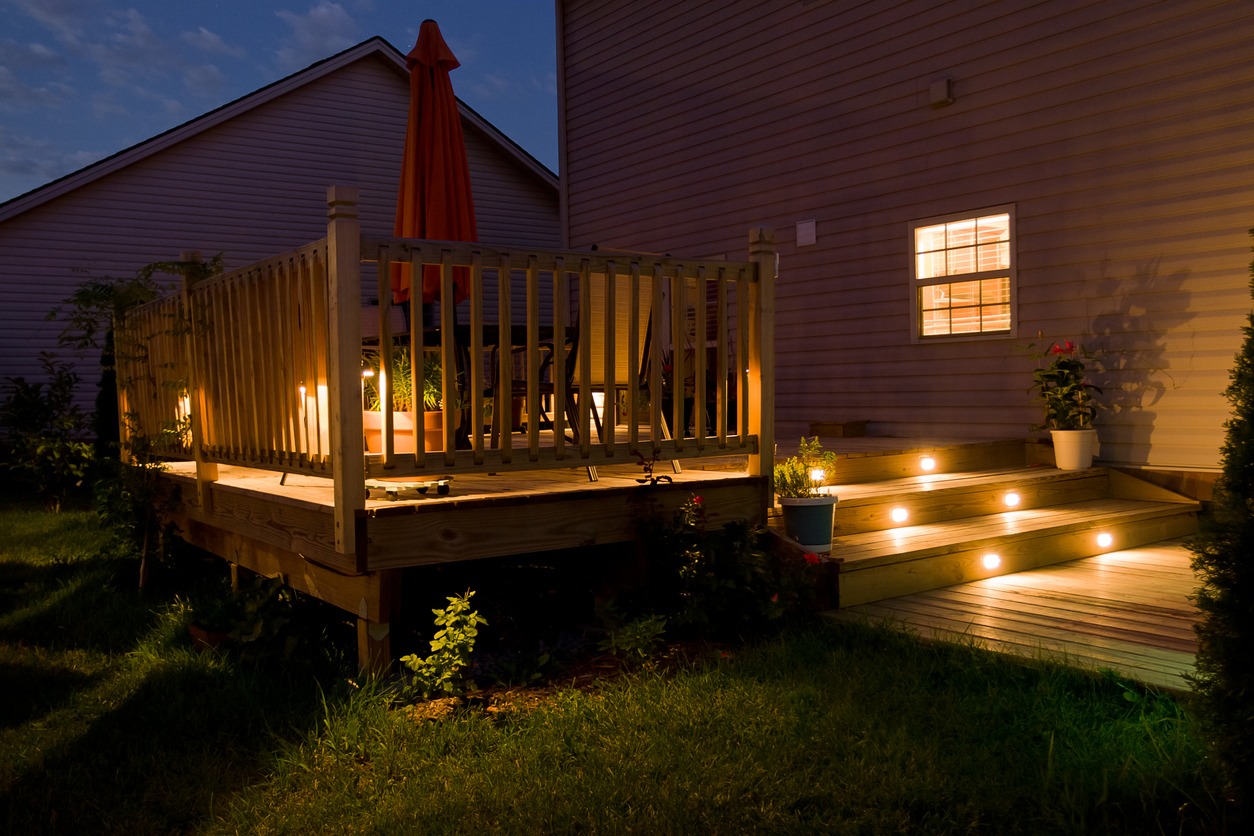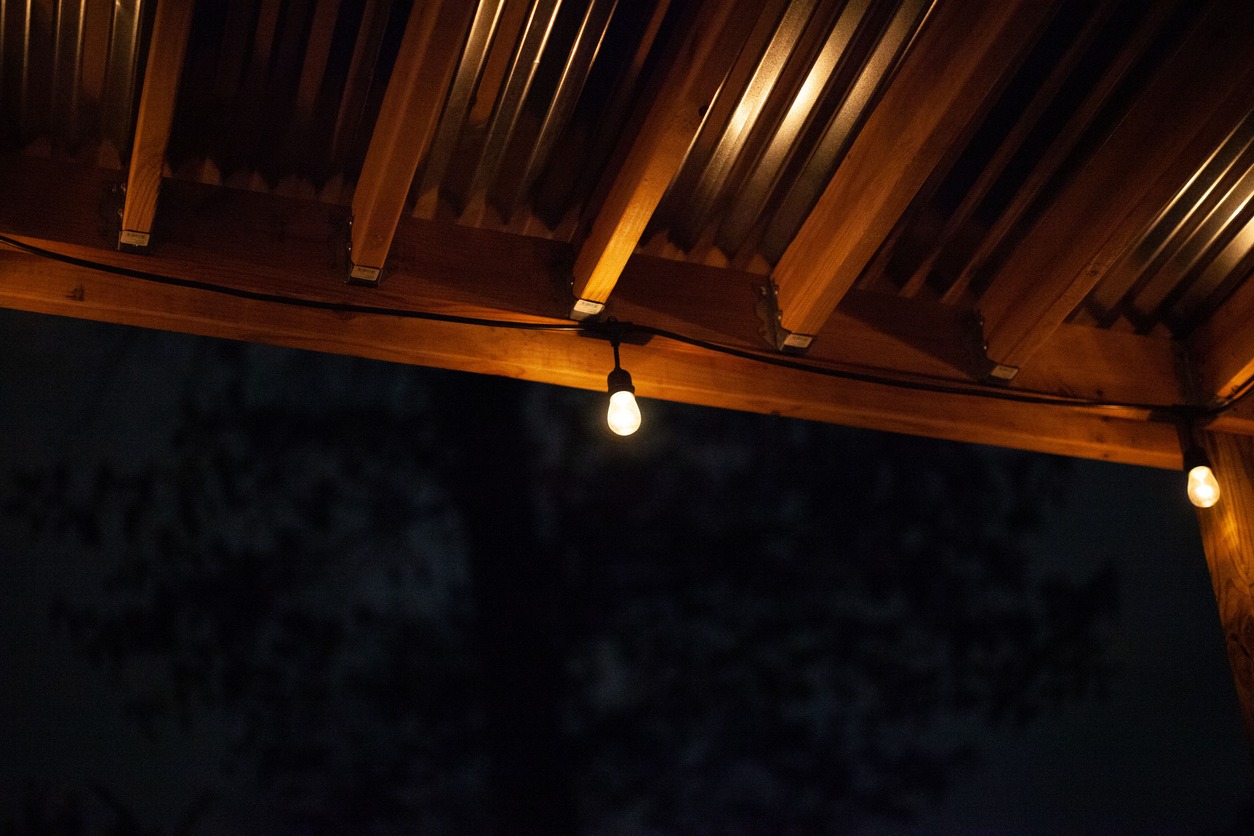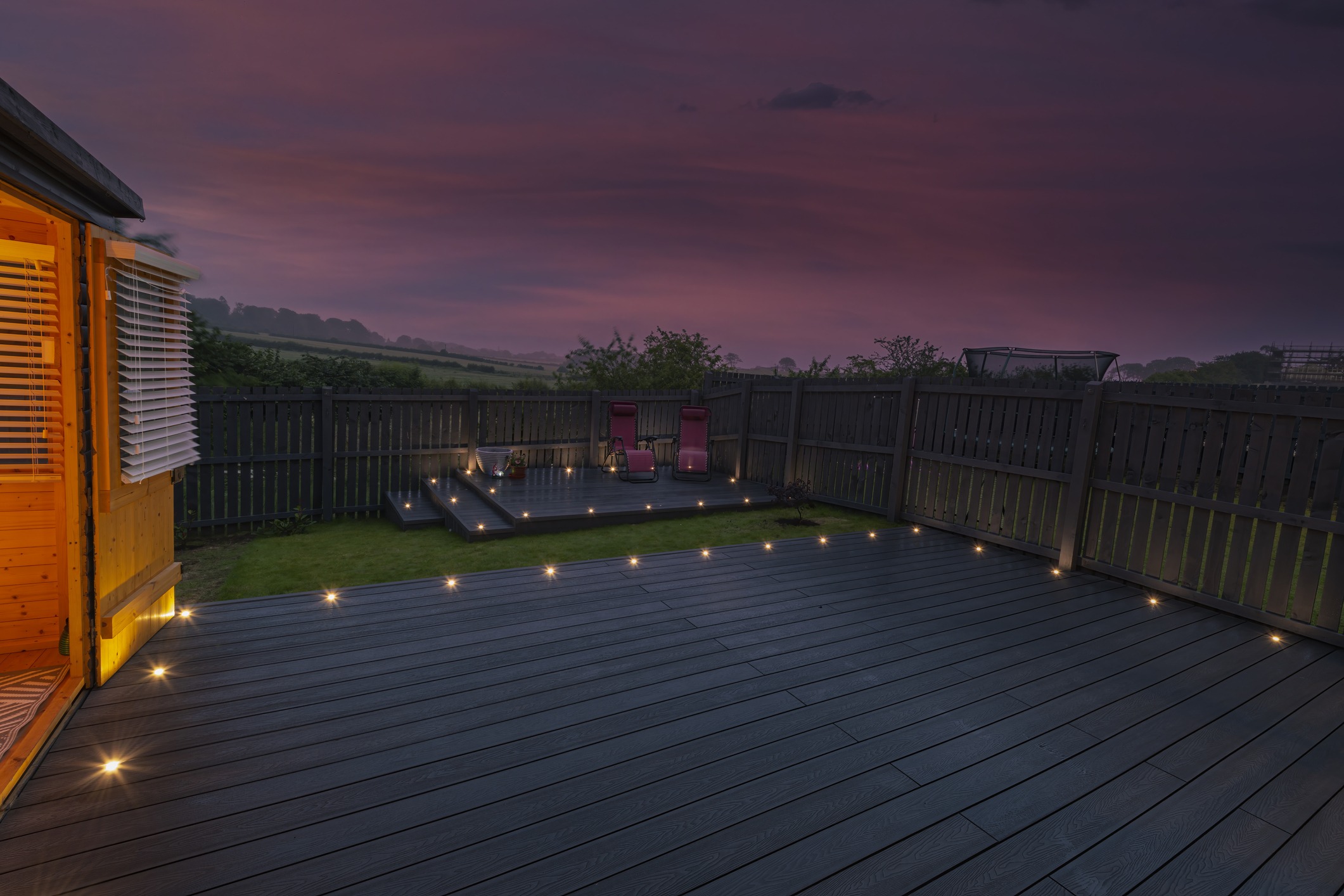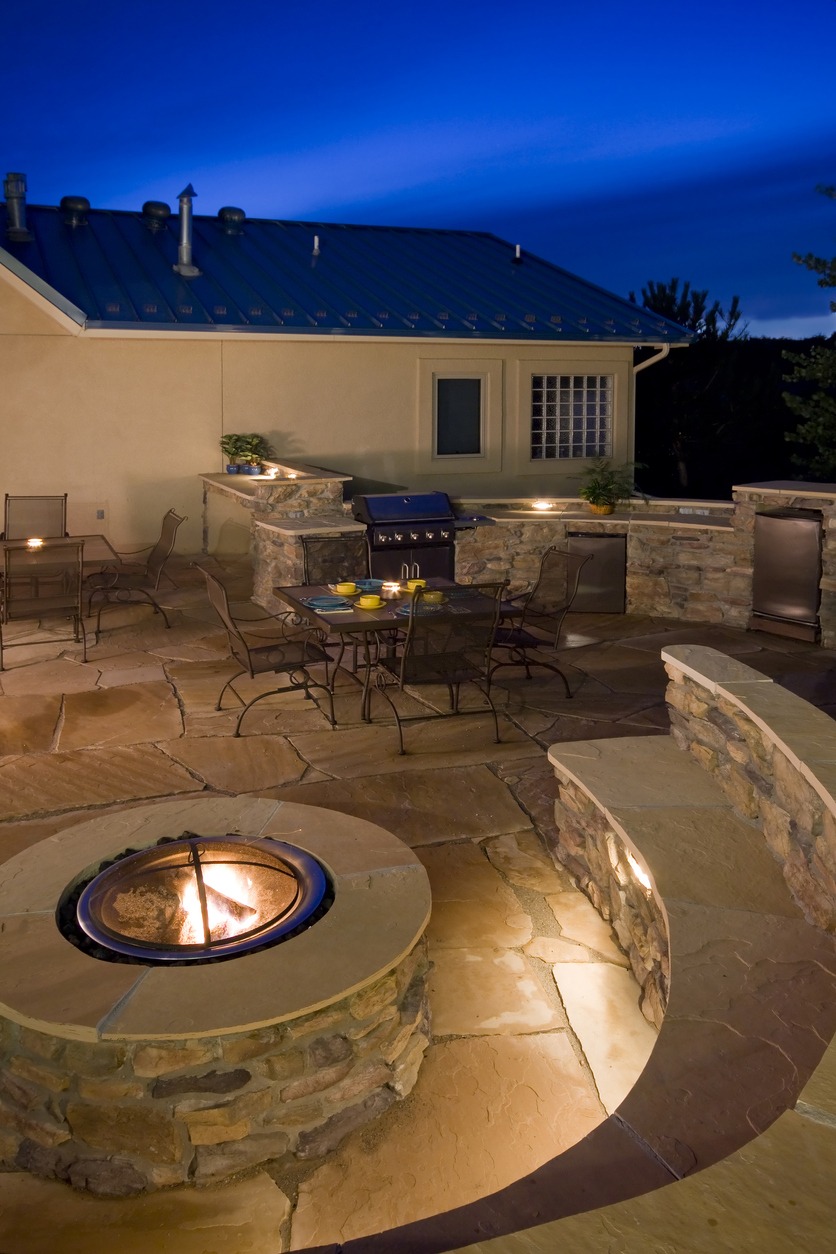Deck lighting serves as both an aesthetic and functional aspect of outdoor living spaces. Effective lighting enhances the beauty of a deck, extends its usability into the evening hours, and improves safety by reducing the potential for accidents after dark. There is a plethora of deck lighting options available, catering to different styles and preferences. From recessed lighting that offers a flush finish to chic string lights that add a soft glow, the choices for illumination are abundant. These lighting solutions not only create ambiance but also provide the necessary visibility for navigating the space.
When considering outdoor lighting, it’s important to factor in the various areas of the deck that can benefit from illumination. Step lights and path lights ensure safe footing, while well, spot, or uplights can accentuate landscaping features or architectural elements. Choosing weatherproof LED strip lights can outline the deck’s perimeter and highlight its shape. The versatility of contemporary lighting fixtures allows homeowners to craft a tailored lighting plan that complements their outdoor living space both functionally and visually.
Electrical features designed for outdoor environments are an integral component of deck lighting installations. These fixtures are built to withstand the elements while providing consistent and reliable lighting. With a well-thought-out lighting plan, a deck can transform into a comfortable and inviting outdoor retreat that is perfect for relaxation or entertaining guests. By incorporating the right mix of lighting elements, one can ensure that their deck is not only well-lit but also reflects their personal style and enhances the overall outdoor experience.
Planning Your Deck Lighting Layout
Developing a successful lighting layout for a deck requires considering both functionality and aesthetics, with the goal of creating a safe and inviting outdoor space.
Developing a Lighting Plan
A lighting plan is the blueprint for deck illumination. One must assess the deck’s usage, whether for entertaining, relaxation, or both, to determine where light should be focused. Key areas especially in need of illumination include stairs, walkways, and doorways for safe navigation. Task lighting should be planned for any outdoor kitchens, while ambient lighting can enhance the overall atmosphere. A fundamental part of the plan is choosing the correct transformer—the device that powers the lighting system. It must be capable of handling the required electrical load while allowing for some flexibility as lighting needs may evolve over time.
Choosing the Right Lighting System
Selecting an appropriate lighting system means understanding the options available. Low-voltage lights are frequently favored for deck lighting due to their safety and energy efficiency. They require a transformer to step down the home’s 120-volt house current to a safer 12 to 20 volts. When installing low-voltage lighting, cable selection is crucial; cables must be of adequate gauge to prevent voltage drop over distances. Light placement should ensure even distribution without glaring hotspots, and lighting fixtures should blend seamlessly with the deck’s design. Various styles, such as recessed lights or post lamps, can be chosen to match the deck’s architecture and the homeowner’s personal style.
Light Fixture Types and Placement
When designing an outdoor space, choosing the right type and placement of deck lighting fixtures enhances both aesthetics and safety. Each kind of lighting fixture serves a distinct purpose and needs to be positioned thoughtfully throughout the deck area.
Post Cap and Rail Lights
Post cap lights are fixtures that can be mounted on the top of deck posts. They provide a soft, downward glow that creates a warm ambience and outlines the deck’s perimeter. This type of lighting is often solar-powered, which makes for easier installation and lower energy costs. Rail lights are smaller fixtures that can be attached to the sides of railing posts or directly onto the railings themselves. They are excellent for illuminating handrails to ensure visibility and safety.
- Benefits:
- Enhances safety by marking the deck boundaries
- Offers subtle, ambient lighting
- Recommended Placement:
- On every post or alternating posts, depending on the level of desired illumination
- Along the railing for continuous lighting
Stair and Step Lights

Stair lights and step lights are essential for preventing accidents by clearly lighting up each step leading to and from the deck. These lights can be installed directly into the risers or the vertical sections of the stairs, or be placed adjacent to each step. Step lights should cast enough light to easily see each tread but should be shielded to prevent glare.
- Benefits:
- Increases visibility and reduces the risk of falls and trips
- Can be decorative while still functional
- Recommended Placement:
- On each step or every few steps, depending on the stairs’ length and the necessary level of visibility
Recessed Deck Lighting
Recessed deck lighting is a sleek option that involves lights being installed flush with the deck surface. They can be used along walkways, within the deck floor, or even on stair treads. It’s vital they are weatherproof and durable, as they can be exposed to foot traffic and the elements. These fixtures should be spaced evenly to ensure a harmonious look and sufficient lighting coverage.
- Benefits:
- Provides a modern aesthetic and clean lines
- Avoids any protrusion that can be a trip hazard
- Recommended Placement:
- Strategically placed for pathway lighting and area illumination
- Integrated within the stair design for a seamless look
Incorporating these types of light fixtures into a deck design should be done with a clear plan for their location and function to maximize the effectiveness and safety of the outdoor living space.
Electrical Considerations and Safety
When planning for deck lighting, understanding the electrical components is crucial for both functionality and safety. Adequate wiring, correct transformer size, and strategic safety lighting are key to a well-executed installation.
Wiring and Transformer Size
The wiring must be of a suitable gauge and type for outdoor use, typically UV-resistant and suitable for burial if not in conduit. It is recommended to use a heavier gauge than required to account for voltage drop over distance, ensuring consistent lighting brightness. The transformer size is also vital; it must match the total wattage of all deck lights plus an additional 10-20% capacity for optimal performance.
- Transformer Sizing Table:
| Total Wattage of Lights | Recommended Transformer Size |
|---|---|
| 0 – 60W | 75W Transformer |
| 61W – 120W | 150W Transformer |
| 121W – 180W | 200W Transformer |
| 181W – 240W | 300W Transformer |
Important: Transformers should be installed close to the power source and in a location protected from direct weather conditions.
Circuit and Safety Lighting
A dedicated circuit for deck lighting prevents overloading and potential electrical hazards. It’s best practice to have a GFCI (Ground-Fault Circuit Interrupter) outlet for outdoor electricity use to protect against electrical shock.
Safety lighting focuses on illuminating potential trip hazards, such as steps, edges, or level changes, and should be bright enough to navigate safely, yet not so bright as to cause glare. For safety and security:
- Install lights strategically to provide even coverage.
- Use fixtures rated for outdoor use, sealed against moisture and dust.
- Placement should enhance visibility of obstructions and elevation changes.
Regular inspections and maintenance of all electrical components are necessary to ensure long-term safety and functionality of deck lighting systems.
Solar and Low Voltage Deck Lighting
Deck lighting is a crucial aspect of outdoor living, enhancing both the aesthetics and functionality of a space. Within this realm, solar and low voltage options offer efficient and practical solutions for illuminating decks.
Solar Lights Advantages
Solar deck lighting harnesses the sun’s energy, translating into cost savings and eco-friendliness. Installation typically requires no wiring, simplifying the setup process.
- Cost-Effective: Solar lights eliminate ongoing electricity costs.
- Environmentally Friendly: They reduce carbon footprint by utilizing renewable energy.
- Easy to Install: No wires mean they can be placed almost anywhere sunlight is accessible.
Low Voltage Lighting Benefits
Low voltage deck lighting, on the other hand, provides consistent illumination with energy savings. It operates on just 12 to 24 volts, minimizing electrical hazards.
- Safety: Low voltage systems carry less risk of electrical shock.
- Energy Efficiency: They consume less power than traditional lighting.
- Design Versatility: Available in various styles, they integrate seamlessly with deck designs.
- Enhanced Control: Allows for dimming and integration with timers and sensors for added convenience.
Decking Material and Lighting Compatibility
When integrating lighting into a decking project, the compatibility between decking material and lighting options is paramount. Distinct materials like composite decking and wood have unique attributes that influence the choice of lighting.
Composite Decking and Lighting
Composite decking material is celebrated for its durability and low maintenance requirements. It’s an ideal surface for integrating in-floor lights and recessed lighting due to its uniformity and resistance to warping. Lighting systems are often designed with composite decking in mind, ensuring seamless installation. Manufacturers usually recommend specific fixtures that are designed to work with their decking, which aids in maintaining warranties and maximizes the lifespan of both the decking and lighting.
- Advantages:
- Uniform material
- Resistant to the elements
- Accommodates diverse lighting options
Wood and Aluminum Options
Wood materials offer a natural aesthetics for decks but require a thoughtful approach to lighting. One should avoid placing lights directly over joists to prevent compromising the structure. Wood’s versatility allows for a range of lighting options such as post lights that add a traditional charm.
Aluminum materials are both lightweight and sturdy, making them suitable for rail lights that adequately illuminate the deck perimeter without weighing down the structure. Aluminum also excellently complements post lights, offering a contemporary feel that works well with more modern lighting designs.
- Advantages:
- Natural appearance (Wood)
- Lightweight yet robust (Aluminum)
- Versatile for a variety of lighting types
Enhancing Ambience with Deck Lighting

Deck lighting can transform an outdoor space, offering both functional illumination and an inviting atmosphere. Strategic placement and types of lighting can create an enchanting soft glow that enriches the aesthetic appeal of the deck.
Accent Lighting Techniques
Accent lighting plays a crucial role in enhancing the ambiance of a deck. It involves placing lights to highlight certain features while adding layers of ambient light. Techniques include:
- Directional Spotlights: These lights can focus a beam on specific elements like sculptures, trees, or architectural details, creating a dynamic effect.
- Recessed Deck Lights: Installed flush into the deck boards, they provide a subtle accent light and reduce the risk of tripping.
Decorative Lighting and Lanterns
Decorative lights are not just functional; they serve as key aesthetic features that can elevate the overall look of a deck.
- Hanging Lanterns: Suspended from overhead structures, lanterns impart a classic and timeless charm. They create focal points and add a soft, diffuse ambient light.
- Tabletop Lanterns: For those who prefer portable options, lanterns placed on tables or along railings offer versatility and enough light to mingle or dine by.
Additional Deck Features and Lighting Integration
Deck lighting is not just a matter of visibility; it’s also an integral part of deck design that enhances ambience and functionality. Strategic placement and choice of lighting can bring out the best in outdoor furniture and features such as water fountains and fire pits, making them both safe and inviting after dusk.
Integrating Lighting with Outdoor Furniture
Lighting can transform the utility and aesthetics of outdoor furniture. Bench seating and planters can be subtly accentuated with low-voltage lights, providing a warm glow that highlights these features without overwhelming the space. For example, installing lights under benches can add both decorative and practical elements to the deck area, offering guidance along pathways and creating an intimate setting. Additionally, incorporating lights within or around planters can draw attention to the beauty of the foliage, making greenery a central part of the deck’s nighttime ambiance.
Lighting for Water Features and Fire Pits
Integrating lighting into water features and fire pits adds a dynamic layer to their allure. With water features, LED lights can be placed underwater or within the structure to create reflective effects that amplify the soothing sound of running water. Similarly, fire pits benefit from perimeter lighting, which not only enhances safety by marking the edge of the feature but also contributes to the overall mood by casting a soft glow that complements the flickering flames. Accessories associated with these elements, such as decorative stones or fire glass, can be spotlighted to become standout visual attractions.
By carefully considering the type and placement of lighting, one can ensure these additional deck features are both safely navigable and aesthetically pleasing, elevating the entire outdoor living experience.
Installation and Maintenance of Deck Lighting
Deck lighting enhances safety and ambiance, requiring careful planning and execution for installation, followed by regular maintenance.
DIY Deck Lighting Installation
A DIY approach to deck lighting installation allows for a customizable and often cost-effective solution. Here’s how to proceed:
- Planning: Assess the deck’s layout, marking locations for lights on deck support beams and columns to ensure even illumination.
- Materials: Purchase a low-voltage deck lighting kit that usually includes a transformer, wiring, fixtures, and installation instructions.
- Wiring: Route the low-voltage wires, securing them along deck support beams to avoid trip hazards and exposure to the elements.
- Installation: Install fixtures as per plan. For deck surfaces, drill holes and fix the lights in place. For overhead lighting, attach fixtures to a secure point on deck support structures.
- Electrical Connection: Connect the lights to the transformer, ensuring proper wire polarity, and then to a power source.
- Testing: Power on to test the lighting, making adjustments as necessary.
Maintenance Tips: Regularly clean light fixtures, check for exposed or damaged wires, and replace any faulty bulbs to ensure longevity.
Hiring a Professional Contractor
For those preferring expertise, hiring a professional affords peace of mind with quality installation and electrical safety.
- Research: Look for contractors with deck lighting experience, reading reviews and checking references.
- Estimates: Obtain multiple quotes, ensuring they cover both materials and labor.
- Contract: Agree on a detailed contract outlining the scope of work, timeline, costs, and maintenance responsibilities.
- Supervision: While professionals will handle the job, overseeing the process can help ensure adherence to the desired lighting plan and quality.
- Inspection and Maintenance: Enquire if they offer inspection and maintenance services for long-term care of the deck lighting system.
When opting for professional installation, ensure the contractor understands the existing deck structure to prevent damage to deck support columns and beams.
Final Thoughts
Integrating deck lighting and electrical features is more than just an aesthetic choice; it’s a smart investment in enhancing the ambiance and safety of your outdoor living space. The right lighting can transform a simple deck into a stunning extension of your home, providing a warm and inviting atmosphere for evening gatherings or quiet nights under the stars. Beyond beauty, these features play a crucial role in ensuring safety. Well-lit stairs, pathways, and railings minimize the risks of accidents, making your deck a safe haven for family and friends. By thoughtfully planning your deck’s lighting and electrical setup, you create a space that is not only visually appealing but also functionally sound and secure.
Moreover, the options for customization and creativity in deck lighting are virtually endless. From subtle recessed LED lights to dramatic accent lighting, the choices cater to all styles and preferences. Solar-powered options offer an eco-friendly alternative, while smart lighting systems provide convenience and control at your fingertips. Ultimately, the integration of these elements brings your deck to life, extending its usability well into the evening hours and elevating the overall outdoor experience. Whether you’re hosting a lively barbecue, enjoying a quiet evening read, or simply admiring the night sky, a well-lit deck becomes the perfect backdrop for countless cherished moments.



